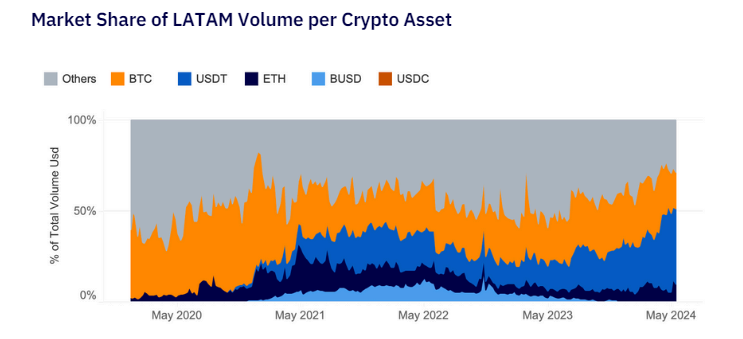- Tierra del Fuego leads Argentina in cryptocurrency transactions, leveraging tax incentives and cold weather for mining.
- Lemon Wallet’s “Crypto Cup” reveals Patagonia’s dominance in crypto transactions amid economic instability.
In Argentina’s Patagonia, the adoption of cryptocurrencies is notably high, particularly in the sparsely populated region of Tierra del Fuego. This area leads the country in digital transactions, largely due to its favorable conditions for Bitcoin mining. The cold climate efficiently cools mining equipment, and local tax incentives further bolster the sector’s appeal, as we have written in Crypto News Flash.
Lemon Wallet, a Argentine digital exchange, tracks and ranks provinces by their cryptocurrency transaction volume. Its recent “Crypto Cup” initiative revealed that Tierra del Fuego executed 19% of these transactions, the highest in the region. This activity considering the province’s small population and harsh winters.
Other provinces in Patagonia, such as Chubut, Neuquén, Santa Cruz, and Río Negro, also show robust cryptocurrency usage. This is partly due to the high salaries necessary to compensate for the high cost of living in such remote areas.
Neuquén, in particular, benefits from its proximity to the Vaca Muerta shale gas field, where excess gas powers local Bitcoin mining operations, adding a layer of sustainability to the energy-intensive process, you can read more about it in our coverage in Crypto News Flash.

Nationally, Argentina’s engagement with cryptocurrencies is among the highest in Latin America, with 18.9% of its population reported as users. This is largely driven by an attempt to mitigate the impact of severe inflation, which reached 211% last year.
Argentinians heavily favor dollar-linked stablecoins like USDC and USDT, which account for 60% of cryptocurrency purchases in the country. This preference helps shield their savings from the volatile Argentine peso.

Patagonia is central mining in Argentina’s Bitcoin market, not just for its mining capabilities but also for its residents’ increasing reliance on digital currencies as a hedge against economic instability. The region exemplifies how geographical and economic challenges can catalyze innovative financial practices, positioning Argentina as a pioneer in the global cryptocurrency market.
- Tierra del Fuego leads Argentina in cryptocurrency transactions, leveraging tax incentives and cold weather for mining.
- Lemon Wallet’s “Crypto Cup” reveals Patagonia’s dominance in crypto transactions amid economic instability.
In Argentina’s Patagonia, the adoption of cryptocurrencies is notably high, particularly in the sparsely populated region of Tierra del Fuego. This area leads the country in digital transactions, largely due to its favorable conditions for Bitcoin mining. The cold climate efficiently cools mining equipment, and local tax incentives further bolster the sector’s appeal, as we have written in Crypto News Flash.
Lemon Wallet, a Argentine digital exchange, tracks and ranks provinces by their cryptocurrency transaction volume. Its recent “Crypto Cup” initiative revealed that Tierra del Fuego executed 19% of these transactions, the highest in the region. This activity considering the province’s small population and harsh winters.
Other provinces in Patagonia, such as Chubut, Neuquén, Santa Cruz, and Río Negro, also show robust cryptocurrency usage. This is partly due to the high salaries necessary to compensate for the high cost of living in such remote areas.
Neuquén, in particular, benefits from its proximity to the Vaca Muerta shale gas field, where excess gas powers local Bitcoin mining operations, adding a layer of sustainability to the energy-intensive process, you can read more about it in our coverage in Crypto News Flash.

Nationally, Argentina’s engagement with cryptocurrencies is among the highest in Latin America, with 18.9% of its population reported as users. This is largely driven by an attempt to mitigate the impact of severe inflation, which reached 211% last year.
Argentinians heavily favor dollar-linked stablecoins like USDC and USDT, which account for 60% of cryptocurrency purchases in the country. This preference helps shield their savings from the volatile Argentine peso.

Patagonia is central mining in Argentina’s Bitcoin market, not just for its mining capabilities but also for its residents’ increasing reliance on digital currencies as a hedge against economic instability. The region exemplifies how geographical and economic challenges can catalyze innovative financial practices, positioning Argentina as a pioneer in the global cryptocurrency market.





